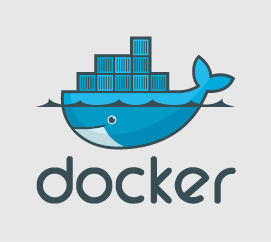Docker takes up a lot of space. When we run the container, pull the image, deploy the application, and build our own image, our disk space will be occupied.
If you are also troubled by this problem, let’s take a look at how docker uses disk space and how to recycle it.
Garageband For Mac Os X El Capitan. Incredible music. In the key of easy. GarageBand is a fully equipped music creation studio right inside your Mac — with a complete sound library that includes instruments, presets for guitar and voice, and an incredible selection of session drummers and percussionists. With Touch Bar features for MacBook. Docker fails to start on Mac (El Capitan) #899. Snoopdave opened this issue on Nov 5, 2016 2 comments. Lifecycle/locked osx/10.11.x status/0-triage version/1.12.1. Djs55 added osx/10.11.x status/0-triage version/1.12.1 labels on Nov 7, 2016. Djs55 closed this on Nov 8, 2016. Automated setup for installing a Docker Lab on your Mac Prerequisites: OSX Yosemite and El Capitan (not tested on the Beta or Developer Previews) Terminal; Internet Access; Changelog: 1.2 Add Python back, updated Docker Toolbox to 1.10.3, added Hashicorp's Otto, added variables for pkg and dmgs. 1.1 Removed Python Installer; 1.0 Initial Build.
The space occupied by docker can be viewed through the following command:
TYPEFour types of disk used by docker are listed:
- Images: space occupied by all images, including pulled images and locally built images.
- Containers: the space occupied by the running containers, indicating the space of each container’s read-write layer.
- Local volumes: the space for the container to mount the local data volume.
- Build cache: mirrors the cache space generated during the build process (only available when using buildkit, available after docker 18.09).
finalRECLAIMABLEIs recyclable size.
Let’s take a look at these types.
Disk usage of container
Every time a container is created, some files and directories are created, such as:
/var/lib/docker/containers/IDDirectory. If the container uses the default log mode, all its logs will be saved to this directory in JSON form./var/lib/docker/overlay2The directory contains the read-write layer of the container. If the container uses its own file system to save data, it will be written to this directory.
Now let’s start with a completely clean system, assuming that docker has just been installed:
First, we start a nginx container:
Run nowdfAfter the command, you will see:

- One image, 126mb
- A container
There is no recyclable space at this time because the container is running and the mirror is being used.
Now, let’s create a 100MB empty file in the container:
View space again:
You can see that the space occupied by the container has increased. Where is the file stored on this machine?
As mentioned above, it is stored in the read-write layer of the container.
When the container is stopped, the space occupied by the container becomes recyclable:
How to recycle it? Deleting a container will delete the space occupied by its associated read-write layer.
You can also delete all stopped containers with one click:
After deleting the container, the image can also be recycled:
abovedocker container pruneThe command is to delete stopped containers. If you want to delete all containers (including stopped and running ones), you can use the following two commands:
Mirrored disk usage
Some of the images are invisible:
- A child image is an intermediate image referenced by other images and cannot be deleted.
- A suspended image, that is, an image that will no longer be used, can be deleted.
The following command lists all mirrors in the suspended state:
Delete this type of image:
Or:
If you want to delete all mirrors, you can use the following command:
Note that the image being used by the container cannot be deleted.
Disk usage of data volume
Data volume is the data storage outside the file system of the container itself.
For example, the application in the container has the function of uploading pictures, which can’t be saved in the container after uploading, because the data in the container will be deleted with the death of the container, so these pictures should be saved outside the container, that is, the data volume.
For example, we run a mongodb container for testing and import a lot of test data, which is not inside the container, but in the data volume, because the data volume is used in the dockerfile of mongodb.
After the test is completed, the mongodb container is deleted, but the test data is still there and has not been deleted.
To delete a data volume that is no longer in use:
Or:
Disk usage of build cache
Docker 18.09 introduced buildkit to improve the performance, security, storage management and other capabilities of the construction process.

To delete the build cache, you can use the following commands:
One click cleaning
Through the above instructions, we know that containers, images, and data volumes all providepruneThis subcommand helps us reclaim space.
Docker El Capitan Update
In fact, the docker system also haspruneThis subcommand can clear the useless space with one click:
It’s a good habit to execute this order regularly.
Translation from:
Docker El Capitan Download
https://medium.com/better-programming/docker-tips-clean-up-your-local-machine-35f370a01a78
Docker Mac El Capitan
The above is the whole content of this article. I hope it will help you in your study, and I hope you can support developepaer more.